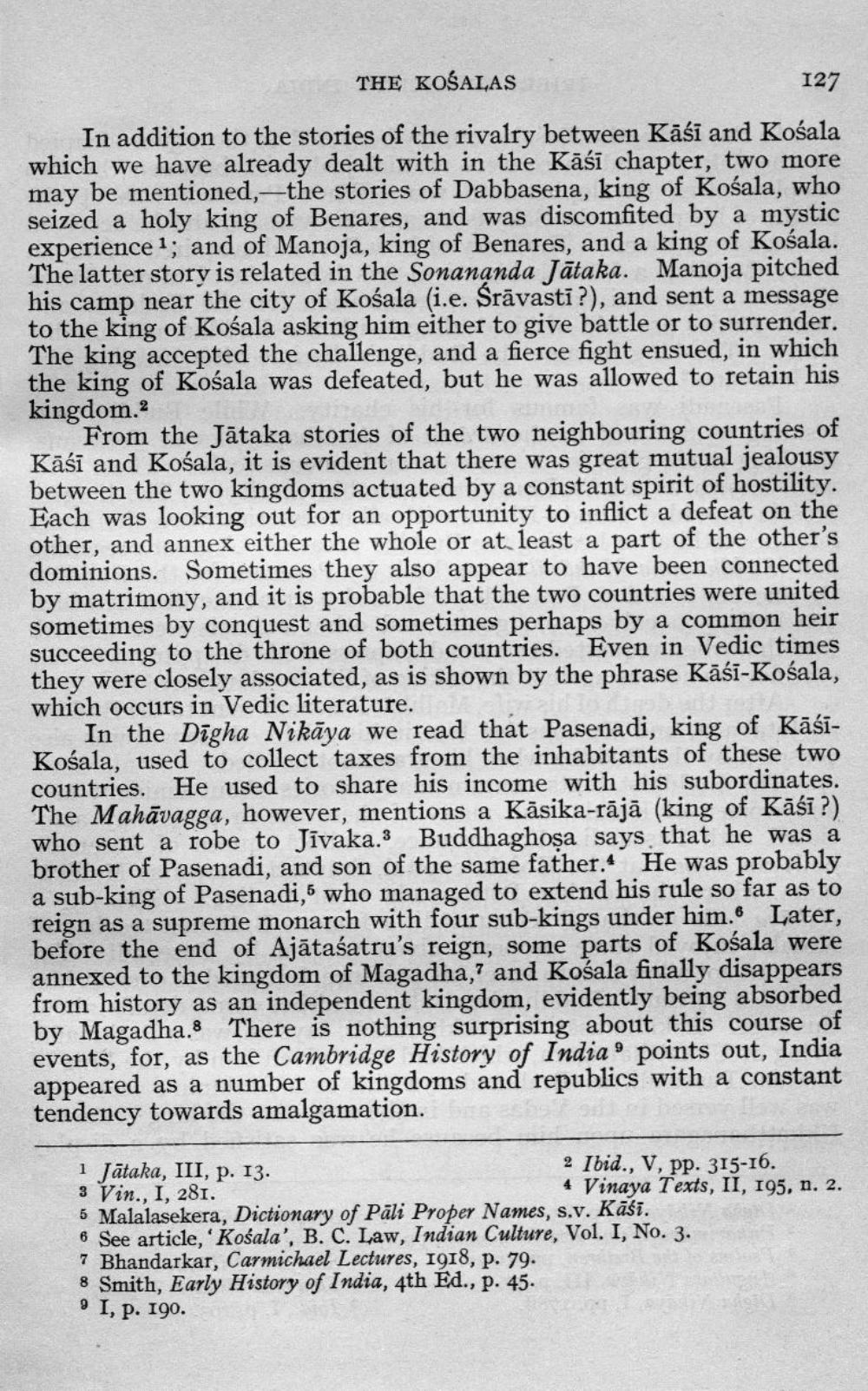________________
THE KOŠALAS
127 In addition to the stories of the rivalry between Kāśi and Kośala which we have already dealt with in the Kāśī chapter, two more may be mentioned, the stories of Dabbasena, king of Kośala, who seized a holy king of Benares, and was discomfited by a mystic experience ?; and of Manoja, king of Benares, and a king of Kośala. The latter story is related in the Sonananda Jātaka. Manoja pitched his camp near the city of Kośala (i.e. Śrāvasti?), and sent a message to the king of Kośala asking him either to give battle or to surrender. The king accepted the challenge, and a fierce fight ensued, in which the king of Kośala was defeated, but he was allowed to retain his kingdom.
From the Jātaka stories of the two neighbouring countries of Kāśi and Kośala, it is evident that there was great mutual jealousy between the two kingdoms actuated by a constant spirit of hostility. Each was looking out for an opportunity to inflict a defeat on the other, and annex either the whole or at least a part of the other's dominions. Sometimes they also appear to have been connected by matrimony, and it is probable that the two countries were united sometimes by conquest and sometimes perhaps by a common heir succeeding to the throne of both countries. Even in Vedic times they were closely associated, as is shown by the phrase Kāśi-Kośala, which occurs in Vedic literature.
In the Dīgha Nikāya we read that Pasenadi, king of KāśiKośala, used to collect taxes from the inhabitants of these two countries. He used to share his income with his subordinates. The Mahāvagga, however, mentions a Kāsika-rājā (king of Kāśi?) who sent a robe to Jivaka.3 Buddhaghosa says that he was a brother of Pasenadi, and son of the same father. He was probably a sub-king of Pasenadi, who managed to extend his rule so far as to reign as a supreme monarch with four sub-kings under him.6 Later, before the end of Ajātaśatru's reign, some parts of Kośala were annexed to the kingdom of Magadha,' and Košala finally disappears from history as an independent kingdom, evidently being absorbed by Magadha. There is nothing surprising about this course of events, for, as the Cambridge History of India' points out, India appeared as a number of kingdoms and republics with a constant tendency towards amalgamation.
1 Jataka, III, p. 13.
2 Ibid., V, pp. 315-16. 3 Vin., I, 281.
4 Vinaya Texts, II, 195, n. 2. 5 Malalasekera, Dictionary of Pāli Proper Names, s.v. Kāśi. 6 See article, 'Kośala', B. C. Law, Indian Culture, Vol. I, No. 3. 7 Bhandarkar, Carmichael Lectures, 1918, p. 79. 8 Smith, Early History of India, 4th Ed., p. 45. 9 I, p. 190.




